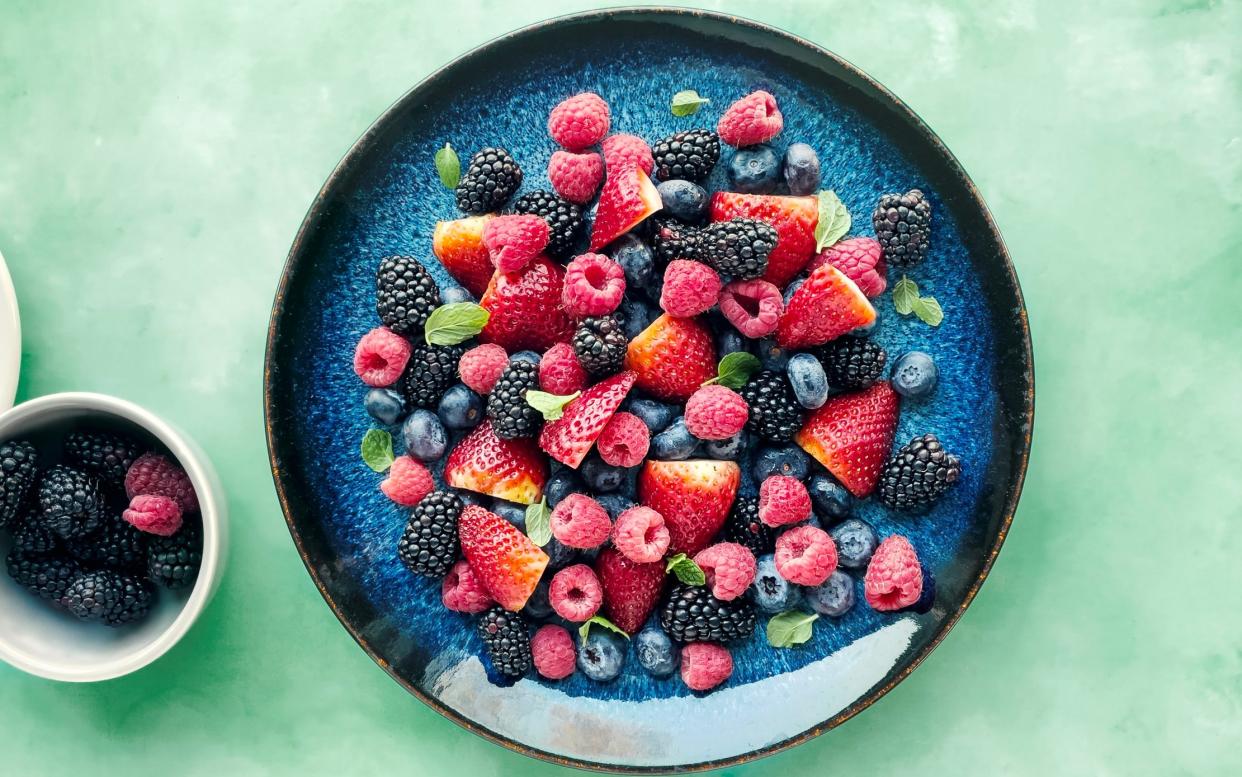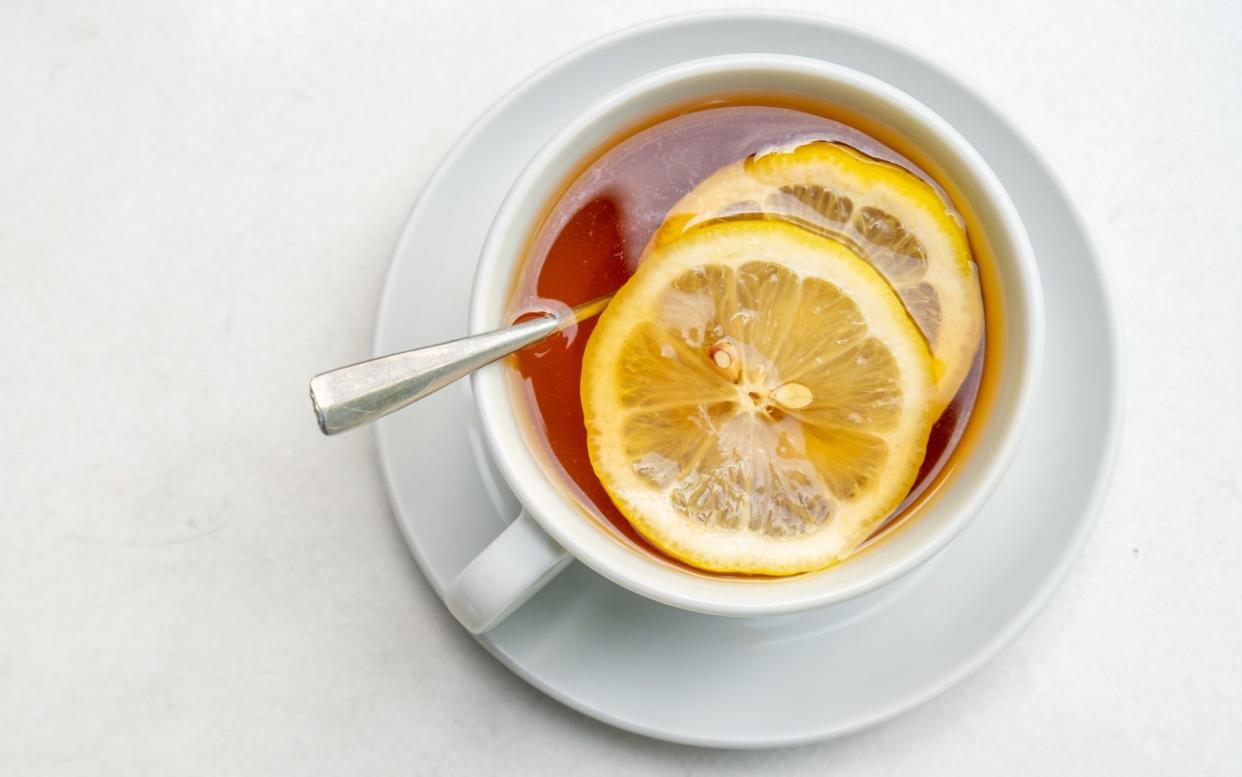How flavonoid-rich foods like chocolate and berries keep Type 2 diabetes at bay

We all know that fruit and veg are good for us. But not everything that’s good for you looks like your typical five a day.
Flavonoids, compounds that are high in antioxidants, are found naturally in many fruits and vegetables, but they are also in plant products like wine, tea, and chocolate.
These compounds possess a number of medicinal benefits, including anti-cancer, antioxidant, anti-inflammatory, and antiviral properties. Some have also been shown to have neuroprotective and cardio-protective effects.
Now a new study published in the journal Nutrition & Diabetes reveals that increasing your intake of flavonoid-rich foods can reduce the risk of developing Type 2 diabetes.
“Type 2 diabetes is caused by a diet high in processed foods and because blood sugars become so imbalanced over a long time, our pancreas becomes exhausted,” says Gabriela Peacock, a nutritionist and nutraceutical expert . “It has been shown that flavonoids definitely help prevent this.”
So what are flavonoids exactly and why are they so good for us?
“They are what makes fruit and vegetable colourful and are part of a big family of phytochemicals that plants produce to defend themselves against insects, animals and weather conditions [protecting plant membranes from freezing damage or ultraviolet light],” explains Lucia Stansbie, a registered nutritional therapist from Food Power Nutrition. “And when we eat them it can also help us to regenerate too.”
Flavonoids help regulate cellular activity and fight off free radicals that cause oxidative stress on your body. “In simplest terms, they help your body function more efficiently while protecting it against everyday toxins and stressors,” says Stansbie.
“Foods high in sugars and fats, common in the Western diet, often lack significant nutritional value, including flavonoids,” says Sonia Khan, lead pharmacist at FeelGut.
To instantly increase your flavonoid quota, try switching to a Mediterranean diet that is abundant in colourful fruits and vegetables, nuts, seeds, whole grains, olive oil, with a splash of red wine.
Eight ‘foods’ to boost your flavonoid intake
Red wine
Yes, that’s correct, red wine. It derives its flavonoids primarily from the skin and or seed of red grapes. Regular consumption of red wine (100mL/day) is estimated to provide an average of 88mg of flavonoids. Bear in mind though that alcohol is also a known carcinogen, despite red wine drinkers having the lowest incidence of alcohol-caused cancer. “I don’t think of red wine as too bad, if your diet is otherwise good and you enjoy a small glass of red wine go ahead,” says Peacock.
Onions
The humble onion is in fact a superfood, one of the richest sources of dietary flavonoids. The onion family contains at least 25 different flavonols – an antioxidant subtype of flavonoids that may help manage symptoms of cardiovascular disease and help with cell repair. The onion family is rich in one particular flavonol: quercetin, a plant pigment.
“Quercetin is a potent antioxidant that promotes a healthy inflammatory response and regulates histamine production,” says Peacock. “If you suffer from seasonal allergies such as hay fever, a high dose of vitamin C and quercetin may help.”
As it is a pigment, red and yellow onions contain the most. To keep the quercetin, peel off as little as possible of the outer layers.
“In the same group you find garlic. I like to increase its antioxidant potential by adding it at the last minute to meals. And it needs to be crushed or really thinly sliced, “says Peacock.
Citrus
A squeeze of lemon won’t just give your meal a flavourful zing, it will add flavanones, flavonoids known for their anti-inflammatory properties. Found in lemons, limes, oranges and grapefruit.

These compounds make citrus juice and peels taste bitter. They may also help you manage your weight and cholesterol. “A slice in your G&T counts,” says Peacock. “I regularly recommend my clients to have freshly squeezed lemon juice in the fridge and add it to everything. I love lemon water, it adds excitement to your water and utilises a really powerful sub-group of flavonoids. If you’re worried about your teeth use a straw.”
Chocolate
The Aztecs believed cocoa beans were a gift from the god Quetzalcoatl, they drank it as a refreshing beverage, an aphrodisiac, and even to prepare for war. Used as a currency, they are certainly rich in flavan-3-ols, a subtype of flavonoids that research suggests may benefit vascular function, blood pressure and blood lipids.
Stansbie recommends adding good quality cocoa to your porridge or your morning yogurt.
“Antioxidants are very sensitive to heat and oxidation, so the best way to have them is raw chocolate [produced from cocoa beans that does not contain any additives like sugars],” she says.
The main flavan-3-ols found in cocoa are epicatechin and catechin, and procyanidins: “Strong antioxidants,” says Strasbie.
Epicatechin in particular improves various aspects of cognition in animals and humans.
Note though: “There is a difference between a Cadbury’s bar and raw cacao nibs.” You want a good quality cacao nib of over 75 per cent cocoa ideally, to be receiving any benefits.
Berries
Anthocyanins, a type of flavanol, are naturally produced pigments that give flowers their red, purple, and blue colour. “Berries like blueberries and blackberries are packed with anthocyanins,” says registered nutritional therapist, Jen Walpole.
“These anthocyanins may improve insulin sensitivity and how your body utilises blood sugar, potentially reducing your risk of Type 2 diabetes.”
An easy way to eat them regularly is to add them to your breakfast, advises Peacock. Buying them frozen helps keep them affordable. “These sorts of fruits will provide benefits that outweigh the fructose content. They are low in sugar and high in fibre, so that will slow down the release into your bloodstream.” However, she advises against drinking them as fruit juices. “The problem is you’re removing the fibre, then you’re just getting high levels of sugar.”
Tea
Making a cuppa, something most of us do without thinking, is actually very healthy.
All teas from Camellia Sinensis leaves contain natural flavonoids, although the levels vary among the type of tea. Black, green, oolong and white; flavan-3-ols are found in all four of them.
“Catechins, flavonoids in green tea, have been shown to have strong cancer preventing effects,” says Peacock. “Adding lemon increases the adoption of them. But be careful with the temperature. If it’s too hot it will kill the vitamin C in lemon. So make it warm-ish, not super hot.”
Note also that adding milk could inhibit absorption of tea flavonoids.
Wheat
One of the most important grains in the world, prized as a source of basic nutrients, such as carbohydrates, proteins, and vitamins, wheat is also a rich source of chalcones, a type of flavonoid.
However, many grains consumed in the Western diet are refined which strips away the bran and germ where many flavonoids are found. If you want to make the most of its health properties opt for whole grains, which retain these parts.
Health benefits have also been attributed to wheatgrass. “Wheatgrass is the grass that grows out of the wheat germ and is fantastic,” says Peacock. “It is one of the superfoods.”
Chalcones are also abundant in tomatoes, pears, and strawberries.
Legumes
Not only a rich source of fibre, legumes contain isoflavones, a subtype of flavonoids that may help keep hormones balanced in your body. Some isoflavones are considered to be phytoestrogens, a form of oestrogen that we can get from food.

They are mainly found in soy, soy products, and some other legumes such as fava beans. Isoflavones are less common in other plants.
“Legumes in general are also great for stabilising blood sugar levels, so good for diabetics,” says Peacock. “And they are a source of zinc, and if you’re talking about people with Type 2 diabetes, they have a high urinary excretion of zinc. Integrating food that is a source of zinc like legumes will help compensate for that,” she adds.


